The 2013 NHL Entry Draft was an important one at the time for the Columbus Blue Jackets organization. New general manager Jarmo Kekalainen had just taken over the team alongside a relatively new President of Hockey Operations, John Davidson, who had been with the team since October 2012. Kekalainen was the first European general manager in NHL history, and the duo had three first-round draft picks to make an impact early in their tenure.
Context of the 2013 Draft
The Blue Jackets had quite a few pieces already in place for what seemed to be the next core group of the organization, thanks to the previous management group. Ryan Johansen was the fourth overall pick in 2010, and they hoped he’d be their first-line center of the future. Ryan Murray was the second pick in the 2012 draft, and his teammates believed in his hype so much that he earned the nickname “Norris” around the locker room, as they believed one day he could win the James Norris Memorial Trophy as the top defenseman in the NHL. Although they didn’t have a first-round pick in 2011, the Blue Jackets had selected a young forward nicknamed the “Jennerator” from the Oshawa Generals of the Ontario Hockey League in the second round who would later turn into the team’s captain, Boone Jenner.
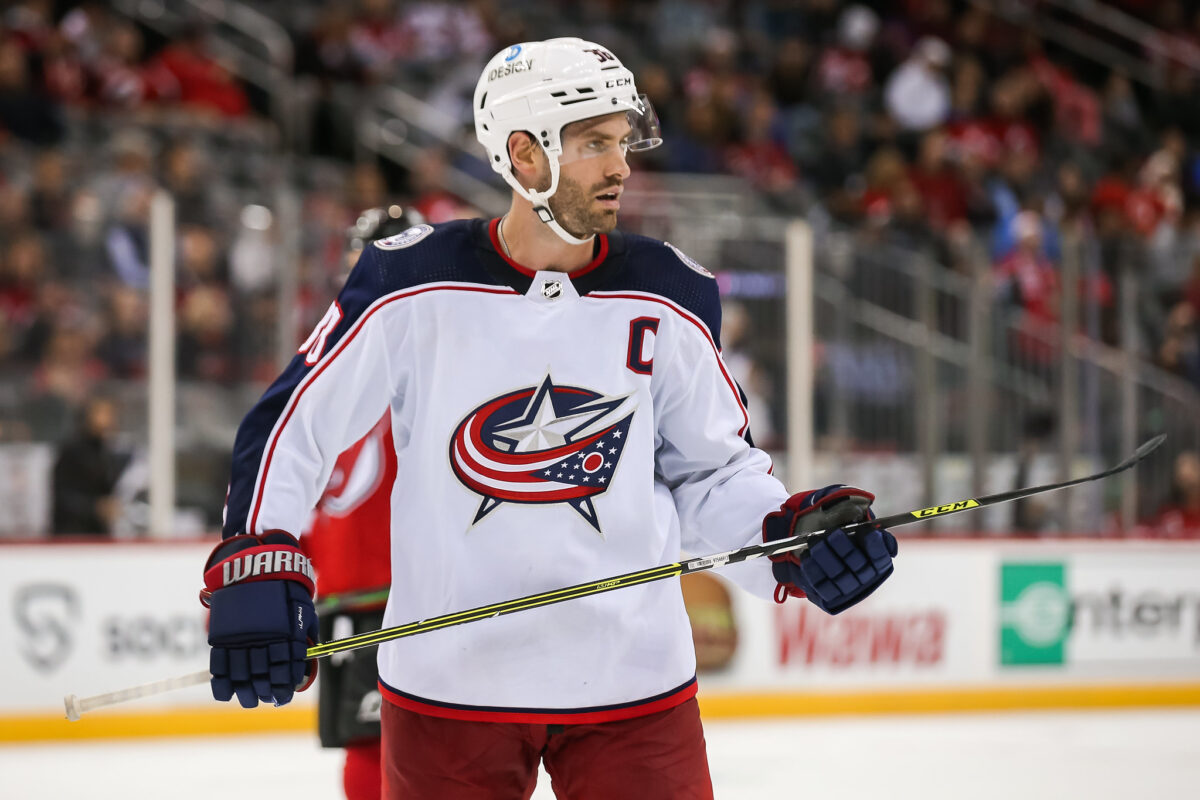
Three of Scott Howson’s final moves before getting fired during the 2012-23 season would end up being of major importance for the franchise in the long run. On June 22, 2012, he traded some draft picks to the Philadelphia Flyers in exchange for a young goaltender named Sergei Bobrovsky. Just over a week later, on July 1, he traded defenseman Marc Methot to the Ottawa Senators and brought Nick Foligno to Columbus. Last but not least, he traded Columbus’ long-time superstar Rick Nash to the New York Rangers on July 23, bringing in Brandon Dubinsky, Artem Anisimov, Tim Erixon, and a 2013 first-round pick back to the Blue Jackets. The Blue Jackets also received a first-round selection in the 2013 draft during the Jeff Carter trade to the Los Angeles Kings.
Overall, the new management team had quite a few key pieces already in place and just needed to supplement their current roster with some players that would be able to complement those that were already in place. They ended up missing the playoffs during the 2012-13 season but had no luck in the draft lottery. The Kings and Rangers both made the playoffs as well, so the Jackets ended up with the 14th, 19th, and 27th selections in the first round.
With the 14th Overall Pick, the Blue Jackets Selected Alexander Wennberg
Alexander Wennberg was drafted out of Djurgardens in the HockeyAllsvenskan, the second-highest tier of Swedish hockey. During the 2012-13 season, he had a decent showing with 14 goals and 18 assists in 46 games. The following season, Wennberg played in the Swedish Hockey League (SHL) for Frolunda HC, where his development took another step forward. He actually had more goals than assists in his only year in the SHL by a large margin, which undoubtedly sounds incorrect to Blue Jackets fans. Yet, it’s the truth. He scored 16 goals and only had five assists through 50 games.
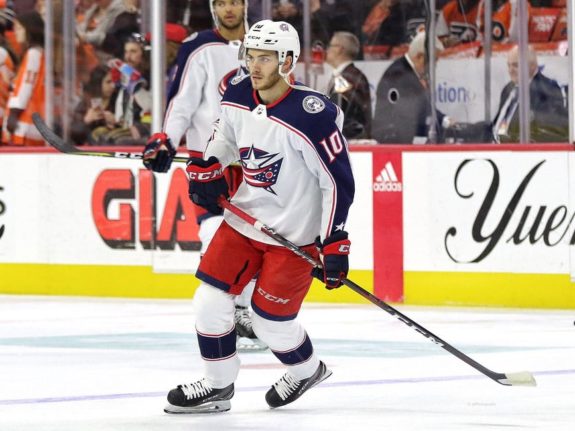
Wennberg made his NHL debut during the 2014-15 season, recording his first point, an assist, against the Buffalo Sabres on Oct. 9, 2014. During that season, head coach Todd Richards had an idea that would be pretty memorable for Blue Jackets fans. He played Wennberg with recent acquisition Scott Hartnell and fellow 2013 draft pick Marko Dano, who we’ll talk about in a little while. This line became known as the “Kid Line,” with Hartnell being included sarcastically. Although it was an entertaining line to watch, and the personnel all made sense together, it was a short-lived line combination as it wouldn’t return the following season.
During the 2015-16 season, the Blue Jackets lost their first seven games under Richards and decided to go a different direction behind the bench, bringing in the controversial John Tortorella. While Wennberg played some of his best hockey at the NHL level under Tortorella, it did come at a bit of a cost. His new coach often got frustrated with Wennberg’s tendency to pass first. While it was frustrating for fans at the time as well, it was a key part of his game, but he kept being prodded to shoot more and more.
Of course, as we discussed earlier, Wennberg had shown some goal-scoring talent in the SHL, so that may be what inspired Tortorella to push him in that direction. During the first season under his new coach, Wennberg doubled his point total in only one more game. The following season, 2016-17, he played even better, notching a career-high in both goals and assists with 13 and 46, respectively. So far, things seemed to be trending in the right direction, but that wouldn’t continue to be the case.
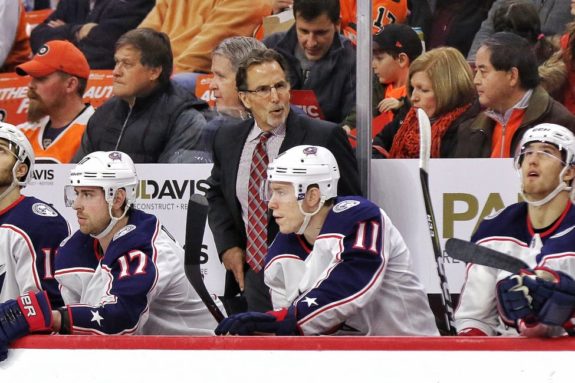
During the 2017-18 season, Wennberg’s totals took a major step in the wrong direction. He was seemingly playing better defensively, but his offensive totals weren’t there, and pressure from the fans began to mount, specifically because this was the first year of a new six-year contract that he signed during the summer. He had an average annual value of $4.9 million against the salary cap, and the organization thought it would be a steal if he continued to develop at the pace we had seen from him previously. His numbers continued to drop until he was eventually bought out right before the start of the 2020-21 season.
What went wrong with Wennberg in Columbus? Well, overall, it was a few different things. Tortorella tried to change him into a player that he simply wasn’t. He was never meant to be a 20-goal scorer at the NHL level, and that’s fine. If they had spent more time focusing on turning him into a responsible two-way center who could put up 40-50 points per season, not only would it have helped the organization, but it would’ve been a much better route for the player as well. With that said, I want to be clear. Tortorella is a phenomenal coach, but only certain types of players truly thrive under his system, and Wennberg wasn’t one of them.
Wennberg’s high-scoring seasons were the result of a much higher shooting percentage, which wasn’t necessarily the result of him shooting more but rather taking the right shots at the right time. It’s difficult to say he would’ve succeeded under a different coach, but there could be an argument for it. He was the type of player who simply didn’t fit what they needed at the time, but he still ended up being a quality NHL player. The struggling seasons after signing his new contract, though, likely did hinder his development pretty significantly.
19th Overall: Kerby Rychel
There’s much less to say about Kerby Rychel than there was with Wennberg. The second-generation NHLer was coming off of a strong season with the Windsor Spitfires of the Ontario Hockey League. Out of the gate, he seemed like a prototypical power forward who was a low-risk, potentially high-reward pick. He was 6-foot-1, 200 pounds in his draft year, which was massive for an 18-year-old. However, as the Blue Jackets went on to learn, low risk doesn’t mean no risk. Based on his size and play style, it seemed as if he would be, at the very least, a decent bottom-six forward as a worst-case scenario.
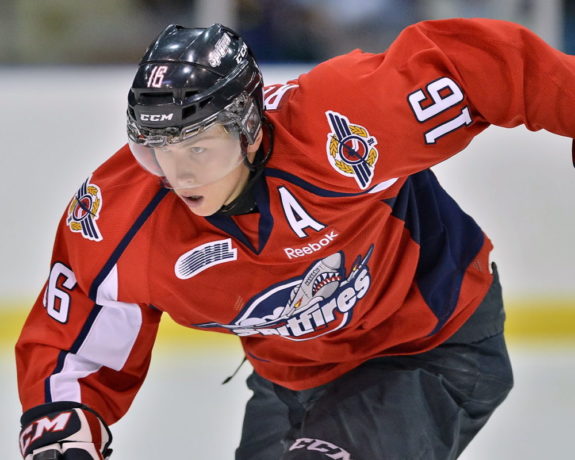
In his draft year, Rychel put up 87 points in 68 games, 40 of which were goals. During the 2013-14 season, he failed to take a major step forward. His father, Warren Rychel, who was the Spitfires’ general manager at the time, traded his son to the Guelph Storm during the season. Between his two teams, Rychel recorded 89 points in 58 games, which was an improvement but not as impressive as the Blue Jackets likely would’ve hoped for. He did have an impressive post-season, though, recording 32 points in 20 games.
During the 2014-15 season, Rychel made his NHL debut with the Blue Jackets and recorded three assists in five games but spent the majority of his time with the Springfield Falcons of the American Hockey League. In his first professional season, he did put up impressive numbers at the AHL level, recording 33 points in 51 games. Based on this season, he seemed like his development was on the right track. However, before the start of the 2015-16 season, the 21-year-old, at the time, forward felt he was being buried on the Blue Jackets’ depth chart.
Rather than waiting for an opportunity to arise and working to succeed when it did come, at the recommendation of his father and agent, Rychel requested a trade. The Blue Jackets traded him to the Toronto Maple Leafs in exchange for Scott Harrington and a conditional fifth, which the conditions were never met. That ended Rychel’s time in Columbus, and after two seasons with the Toronto Marlies in the AHL, his time in Toronto ended as well. After a couple more seasons as a journeyman, he hung up his skates at the end of the 2019-20 season. He likely could’ve had a successful run with the Blue Jackets, even if it was just as a bottom-six forward, but he opted instead to force a move, which was eventually his downfall.
There’s not really much the Blue Jackets could’ve done differently in this situation. They felt he wasn’t ready for the NHL, and his subsequent seasons seemed to prove them right. Unfortunately, this pick ended up being one of the worst in Blue Jackets’ history and was included in the five worst draft picks in franchise history, written by our Nicholas Arnold.
27th Overall: Fan Favorite Marko Dano
Marko Dano’s time with the Blue Jackets is a little hard to describe. There was a lot of hope around him, and fans loved him, but apparently, management thought they’d be better off moving him early, which ultimately led to the end of his North American career. Dano had a strong rookie season on the aforementioned “Kid Line” with Wennberg and Hartnell, putting up 21 points in his first 35 games. He was fairly successful during his run with the Springfield Falcons that season, putting up 19 points in 39 games at the AHL level. Overall, he seemed to be developing at a rapid pace, and his offense was taking a major step forward from what we had seen from him in the Kontinental Hockey League before getting drafted.
It’s worth noting that at the time he was drafted, Dano was seen as a key piece of Slovak hockey’s future. He represented his country at almost every tournament possible and generally seemed to be one of their biggest prospects in a while. However, on June 30, 2015, management saw an opportunity to acquire a key piece of the Chicago Blackhawks’ Stanley Cup victories in both 2013 and 2015, Brandon Saad. Dano was a part of the return for the Blackhawks, who were struggling to fit under the salary cap at the time. Unfortunately, the young Slovak was never able to find his footing with Chicago and was traded less than a year later to the Winnipeg Jets.
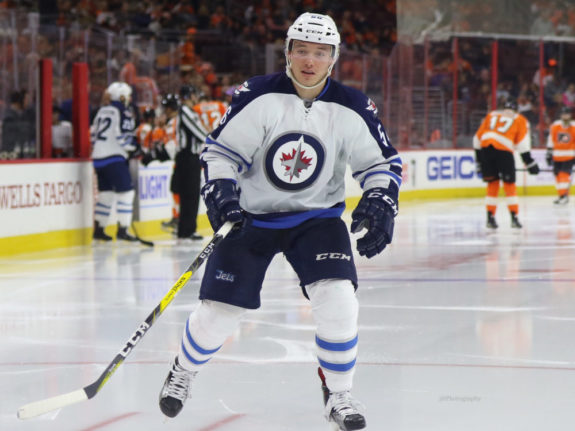
After a couple of seasons with Winnipeg, Dano was claimed by the Colorado Avalanche off of waivers before getting claimed back by the Jets a month later. At the end of the 2018-19 season, Winnipeg decided not to submit a qualifying offer to Dano, and he became an unrestricted free agent. At this point, his career had come full circle, as he signed a one-year contract with the Blue Jackets for the 2019-20 season. With Columbus, he played the final three games of his NHL career but spent most of his time with the Blue Jackets’ new AHL affiliate, the Cleveland Monsters. Since leaving North America, he’s played with HC Ocelari Trinec in the top league of Czechia, the Tipsport Extraliga. He still occasionally represents his country in international competitions and has carved out a nice career for himself in European hockey.
Dano was the type of player everyone wanted to succeed, but the lack of stability in his career made it difficult to truly make an impact and develop properly. If Columbus had never moved him, things could’ve gone much differently for him. Unfortunately, we’ll never know because the Blue Jackets wanted to bypass a proper rebuild with a quick fix that resulted in mediocrity.
Related: Blue Jackets’ Boone Jenner: The Epitome of Consistency
The Blue Jackets’ handling of the 2013 draft class could’ve been much better and could’ve led to more success than they were able to achieve. At the time, it was considered a learning experience for an inexperienced general manager. With that said, having three first-round picks and parting ways with them all less than a decade later is tough to ignore. While the Blue Jackets have had bad draft classes both before and after 2013, it’s hard to imagine one ever being worse than that one.
Management tried to turn Wennberg into a player he simply wasn’t rather than focusing on his strengths. Meanwhile, Dano never got a chance to flourish, and although he handled the situation incorrectly, neither did Rychel. If management allowed these players to develop and compete properly for roster spots rather than trying to create a quick fix, it could’ve been much better for both the players and the team as a whole.
